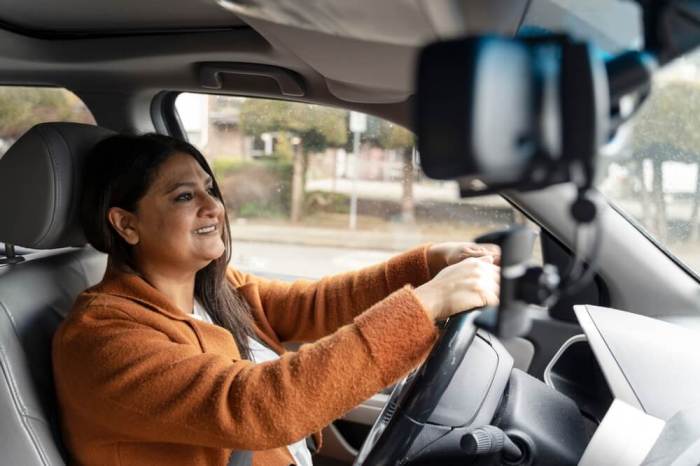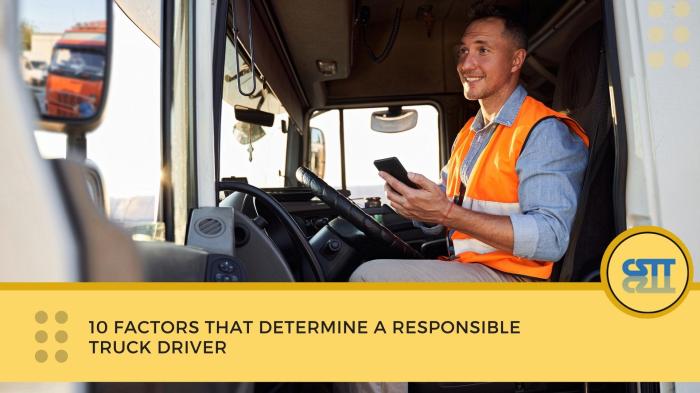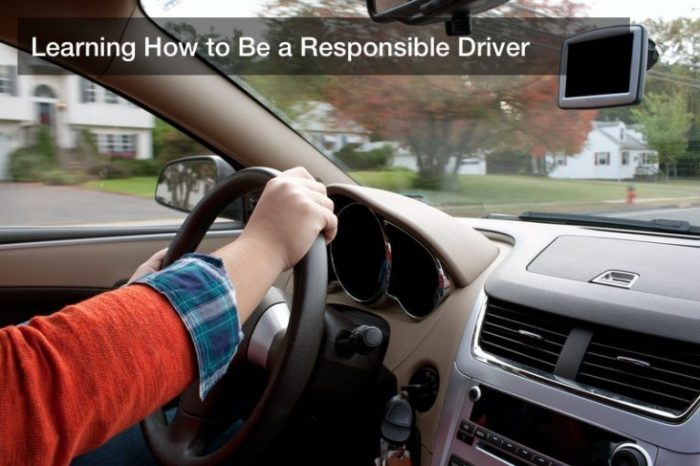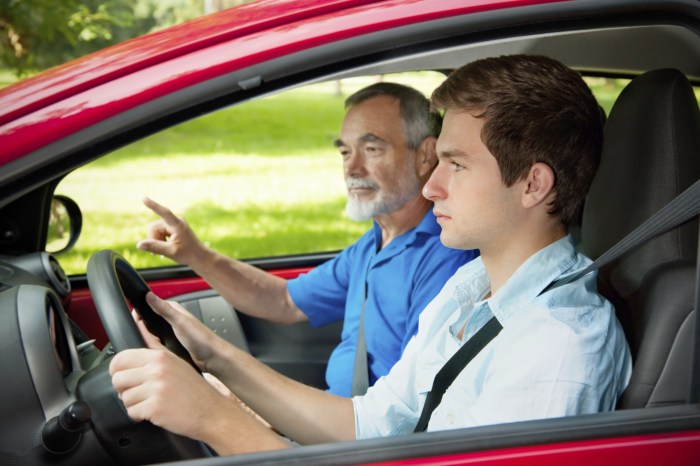How to Be a Responsible Driver delves into the essential aspects of safe and courteous driving practices, guiding you through the key elements that contribute to road safety. From understanding traffic laws to practicing defensive driving and maintaining your vehicle, this comprehensive guide equips you with the knowledge and skills to become a responsible driver.
Understanding Traffic Laws

Knowing and following traffic laws is crucial for every driver to ensure safety on the road and prevent accidents. By understanding and obeying these laws, drivers can contribute to a more orderly and efficient traffic flow.
Common Traffic Violations and Consequences
- Speeding: Exceeding the speed limit is a common violation that can lead to accidents, fines, and even license suspension.
- Running Red Lights: Ignoring red lights can result in serious collisions and endanger the lives of other road users.
- Distracted Driving: Using a phone or engaging in other distractions while driving can lead to accidents and legal penalties.
Contribution to Road Safety
Traffic laws are designed to regulate the behavior of drivers and ensure a safe environment for everyone on the road. By following these laws, drivers can reduce the risk of accidents, injuries, and fatalities. Traffic laws also help in minimizing traffic congestion and promoting a smoother flow of vehicles.
Practicing Defensive Driving: How To Be A Responsible Driver

Driving defensively is a crucial skill that can help prevent accidents and save lives on the road. It involves being aware of your surroundings, anticipating potential hazards, and taking proactive measures to avoid dangerous situations.
Anticipating and Avoiding Potential Accidents
- Stay focused on the road: Avoid distractions such as using your phone, eating, or adjusting the radio while driving.
- Keep a safe following distance: Leave enough space between your car and the vehicle in front of you to allow for sudden stops.
- Scan your surroundings: Continuously check your mirrors and be aware of other vehicles, pedestrians, and potential obstacles.
- Signal your intentions: Use your turn signals to communicate with other drivers and let them know your next move.
- Obey speed limits: Driving at a safe speed reduces the risk of accidents and gives you more time to react to unexpected situations.
Defensive Driving Techniques in Different Scenarios
- Adverse weather conditions: Slow down, increase following distance, and use headlights in rain, fog, or snow.
- Heavy traffic: Stay calm, avoid sudden lane changes, and be patient to prevent road rage incidents.
- Night driving: Use high beams judiciously, watch out for impaired drivers, and be extra vigilant in low visibility conditions.
- Merging onto highways: Yield to oncoming traffic, adjust your speed to match the flow, and merge smoothly to avoid collisions.
- Pedestrian crossings: Always stop for pedestrians at crosswalks, even if the light is green, and be prepared for unexpected movements.
Vehicle Maintenance
Regular vehicle maintenance is crucial for safe driving as it helps ensure that your vehicle operates efficiently and reduces the risk of breakdowns on the road. By performing routine maintenance checks, drivers can identify and address any potential issues before they escalate into more significant problems.
Essential Maintenance Checks
- Check tire pressure regularly to ensure proper traction and handling. Underinflated or overinflated tires can affect your vehicle’s performance.
- Inspect brakes frequently to ensure they are functioning correctly. Squeaking or grinding noises when braking may indicate the need for brake pad replacement.
- Regularly change the oil and oil filter as recommended by the manufacturer to keep the engine running smoothly.
- Check and replace windshield wipers if they are worn out to maintain visibility during adverse weather conditions.
- Inspect lights, including headlights, taillights, and turn signals, to ensure they are working correctly for visibility on the road.
Contributions to Road Safety
Maintaining your vehicle in good condition not only ensures your safety but also contributes to overall road safety. A well-maintained vehicle is less likely to experience mechanical failures that could lead to accidents. By taking the time to perform regular maintenance checks, drivers can play a proactive role in keeping themselves and others safe on the road.
Avoiding Distractions

Driving requires full attention and focus to ensure safety on the road. Distractions while driving can lead to serious accidents, putting not only the driver but also passengers and other road users at risk. It is crucial to identify common distractions, understand their dangers, and implement strategies to minimize them while behind the wheel.
Common Distractions and Their Dangers
- Cell Phone Use: Texting, calling, or using social media while driving takes the driver’s eyes off the road, increasing the risk of accidents.
- Eating and Drinking: Trying to eat or drink while driving can lead to loss of focus on the road and decreased reaction time.
- Adjusting Controls: Changing radio stations, adjusting the GPS, or fiddling with other controls can divert attention from driving.
- Talking to Passengers: Engaging in deep or heated conversations with passengers can be distracting and take away focus from driving.
- Daydreaming: Allowing the mind to wander while driving can lead to missed signals, road signs, and potential hazards.
Strategies to Minimize Distractions
- Put the Cell Phone Away: Keep your phone out of reach or use hands-free options if necessary.
- Plan Ahead: Set up GPS, adjust mirrors, and ensure everything is in place before starting the journey.
- Focus on Driving: Avoid engaging in deep conversations or activities that take focus away from the road.
- Take Breaks: If feeling tired or overwhelmed, pull over in a safe location to rest and regain focus.
- Avoid Multi-tasking: Concentrate solely on driving and avoid trying to do other tasks simultaneously.
Impact of Distracted Driving on Road Safety, How to Be a Responsible Driver
Distracted driving significantly increases the likelihood of accidents on the road. It not only endangers the lives of the driver and passengers but also poses a threat to pedestrians and other motorists. By avoiding distractions and staying focused while driving, individuals can contribute to a safer road environment for everyone.
Respecting Other Road Users

Respecting pedestrians, cyclists, and other drivers is crucial for maintaining safety on the road and fostering a harmonious driving environment. When drivers show respect towards all road users, it helps prevent accidents and promotes a sense of community and cooperation on the streets.
The Importance of Patience and Courtesy
Patience and courtesy play a significant role in ensuring a smooth flow of traffic and reducing conflicts on the road. By being patient with slower-moving vehicles, allowing pedestrians to cross safely, and giving cyclists enough space, drivers can contribute to a safer and more pleasant driving experience for everyone.
- Yielding to pedestrians at crosswalks and intersections.
- Giving cyclists ample room when passing and being mindful of their presence on the road.
- Using turn signals to indicate intentions and giving other drivers enough time to react.
- Avoiding aggressive behaviors such as tailgating, honking unnecessarily, or making rude gestures.
End of Discussion

By implementing the principles of responsible driving Artikeld in this guide, you can not only enhance your safety on the road but also contribute to creating a more secure and harmonious driving environment for all road users. Remember, being a responsible driver is not just a duty but a commitment to prioritizing safety and respect on every journey.